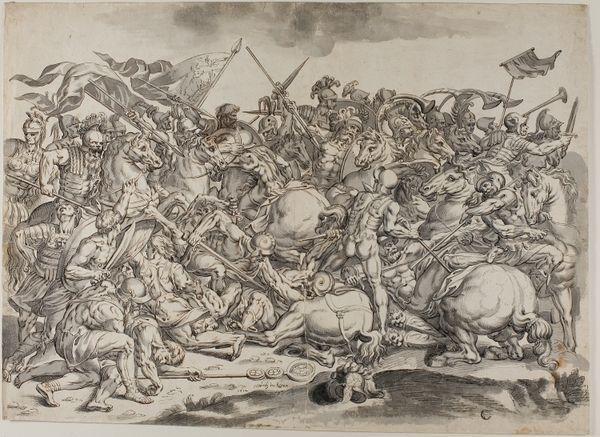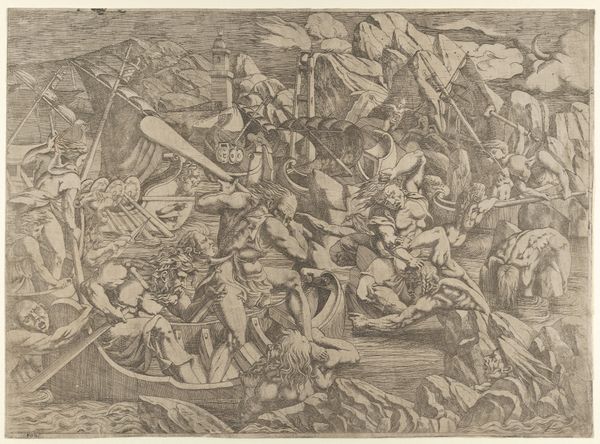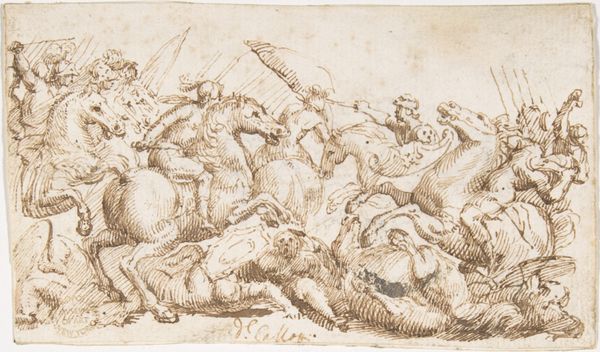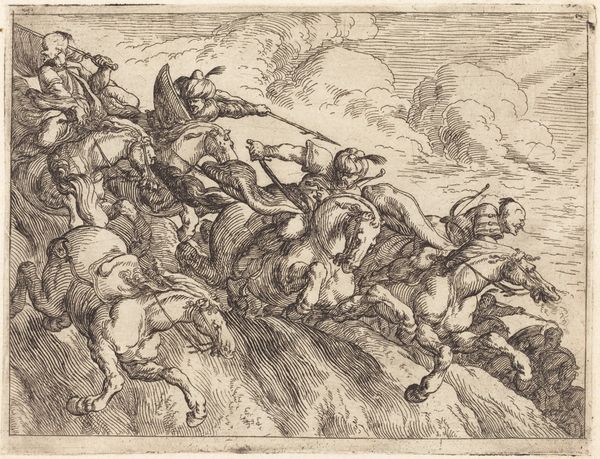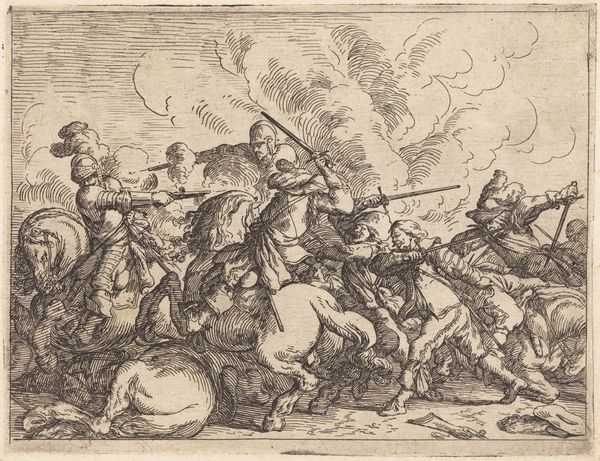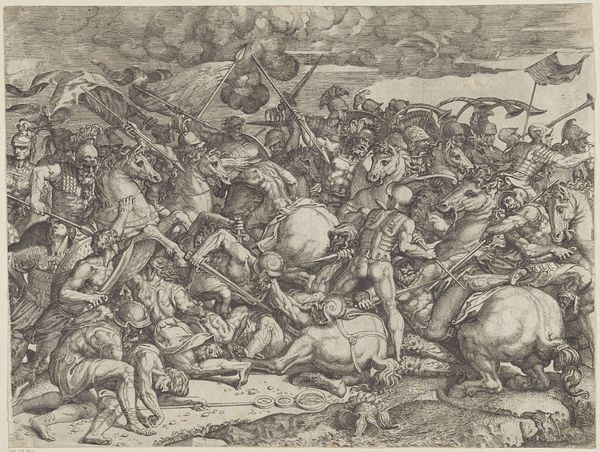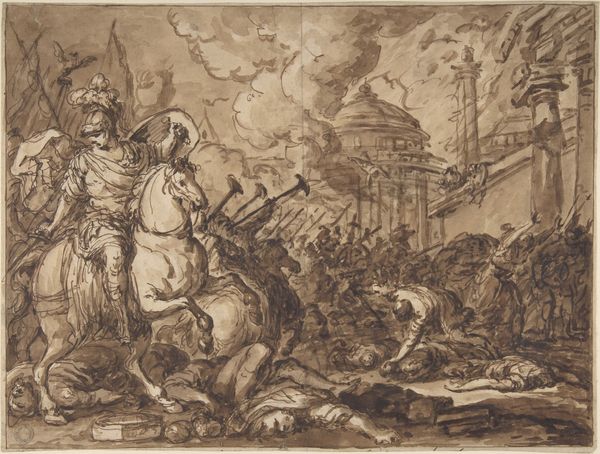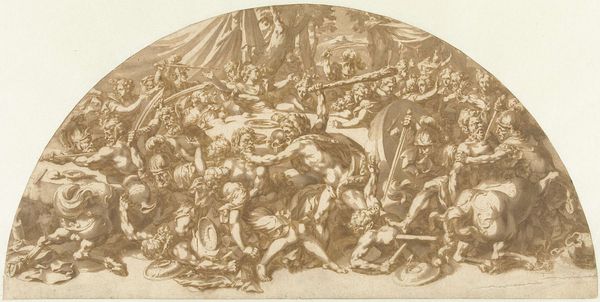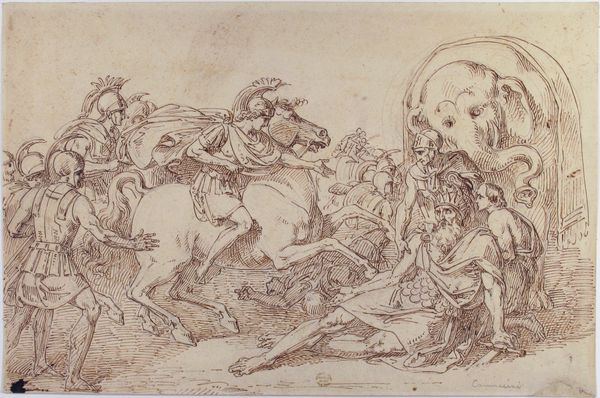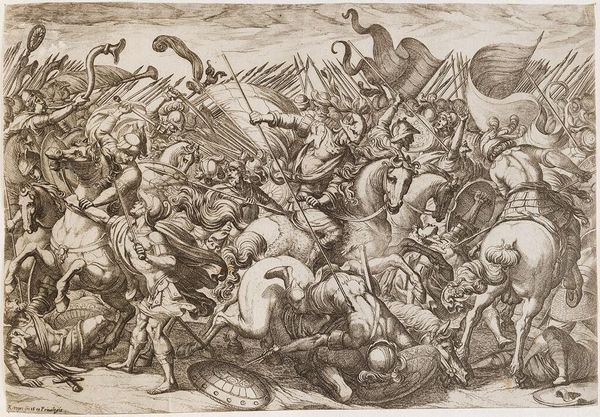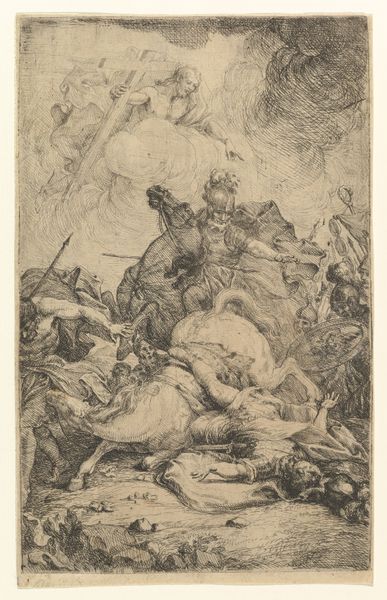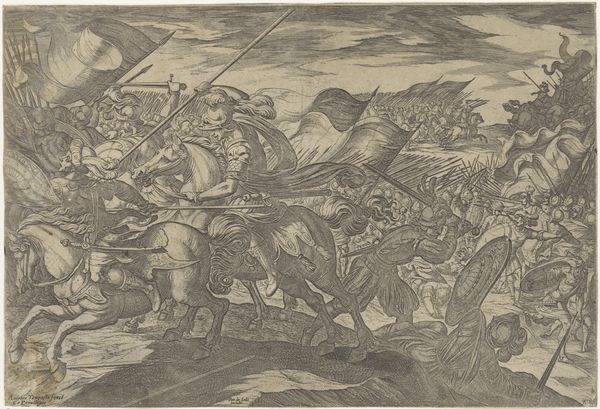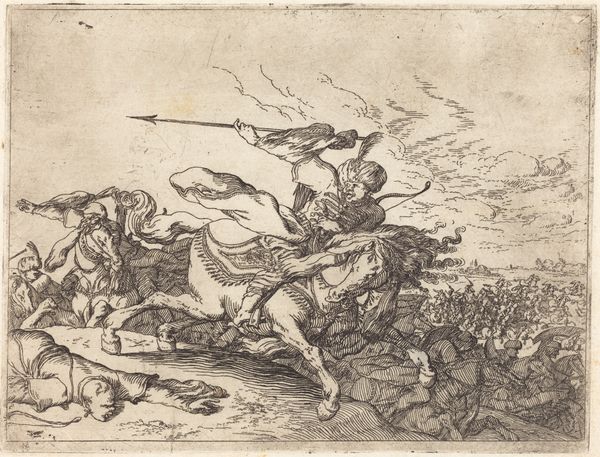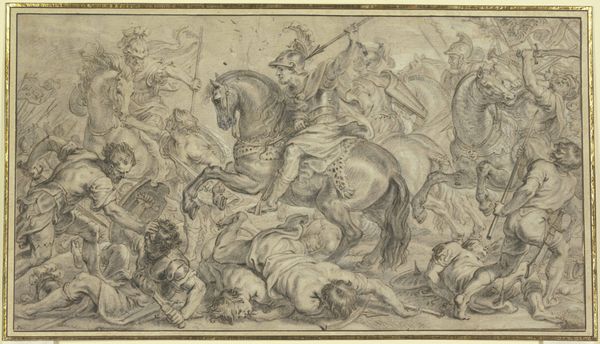
drawing, print, watercolor, ink, pencil
#
drawing
#
baroque
#
ink painting
# print
#
pencil sketch
#
landscape
#
figuration
#
watercolor
#
ink
#
soldier
#
pencil
#
horse
#
watercolour illustration
#
history-painting
Dimensions: 5-3/8 x 7-7/8 in. (13.7 x 20.0 cm)
Copyright: Public Domain
Curator: What a striking piece! There's something immediately visceral about the energy conveyed here. Editor: Indeed. This is "Battle Scene," a drawing created sometime between 1624 and 1663, attributed to Francesco Allegrini. It's currently housed here at the Metropolitan Museum of Art. Curator: The color alone suggests dried blood and ancient conflicts; the umber ink gives it such a historic feel. Is this typical subject matter for the artist? Editor: Allegrini seemed particularly fascinated by dynamism and historical narrative. He explored different drawing styles and mediums from watercolor and ink to pencil sketches to convey them. "Battle Scene" captures a scene rife with conflict, complete with soldiers and horses intertwined in dramatic disarray. There's such chaotic symbolism. Curator: I notice the dominance of horses, rearing up or collapsing. Are they meant to represent something beyond their obvious role in battle? There are religious paintings where horses embody status and virility and pride. I can't help but see a potential underlying hubris in those works. Editor: Absolutely. Within the context of baroque art, and given Allegrini’s socio-historical positionality as court painter for Pope Alexander the Seventh, horses here serve as explicit vehicles for displays of power. Yet at the same time they represent loss and human suffering, as do the soldiers fighting. The image shows war as the ultimate waste of power. There is also a connection to Catholic theology here—war is a recurring symbol for human flaws. Curator: Yes, you can nearly hear the din of clashing steel and desperate cries in the tableau. There’s a psychological weight to that representation, isn't there? The expressions of the faces communicate the experience of combat as the antithesis of the humanistic ideal—but not the futility of war in and of itself, at least in the cultural context that is communicated through art of this era. Editor: That’s an important distinction. We have to also remember how historical context and cultural expectations can inform such a scene. To simply see the horror is to risk missing the glorification too. Even the very act of enshrining warfare into "art" deserves deeper interrogation. But art gives war an appeal through catharsis. Curator: It certainly provides fodder for deeper reflection about these sorts of contradictions within our historical consciousness. Thanks for shining a light on these intersections. Editor: Of course! I trust we have offered insights and raised questions for our listeners today!
Comments
No comments
Be the first to comment and join the conversation on the ultimate creative platform.
